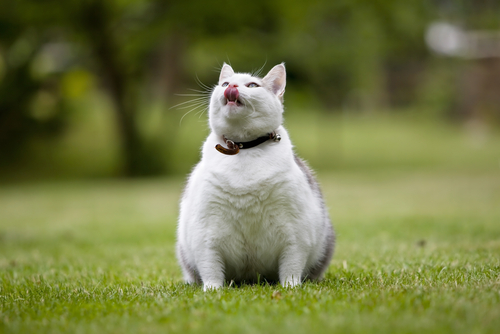
Photo: Shutterstock
Obesity in pets can put a strain on the body and can lead to all kinds of health problems such as diabetes, joint pain and liver disease. When an animal eats more energy than it can burn, this extra energy is stored in the body as fat. Overeating and lack of exercise are the main causes of obesity in dogs and cats.
However, cats are less likely to have obesity than dogs as they don’t usually have the tendency to overeat. While it’s quite easy to evaluate whether your dog is overweight, with cats it can be a bit harder. Generally, you should be able to feel your cat’s backbone and its ribs without having to press down. If you cannot, then signs point to your cat being overweight. Its abdomen should also not be hanging down from the base of its ribcage – this is another sign that your cat is overweight.
For cats, it’s advisable to consult your vet before starting on any exercise or diet program so that it can be tailored specifically according to your cat’s needs. Once you get their approval, here are the key areas you will likely have to focus on to deal with overweight cats:
Diet: Your vet will ask you questions and evaluate your pet to estimate its ideal daily calorie intake in order to lose weight. You will need to choose a suitable food for your animal and pay close attention to the amount you have to feed it.
Exercise: Getting more exercise can help your pet with its mobility as well as facilitate weight loss. Your vet will suggest what kinds of exercises are appropriate for your pet. Make an effort to stick to a routine so that your pet gets used to a daily workout.
Behaviour: Just as with humans, your pets are also creatures of habit. In order to relearn food behaviours, you have to work with your pet to change certain routines. For instance, if you tend to spoil them with treats or continuously give them scraps of food, now is a good time to cut down.
Small steps: Other ways to aid weight loss include keeping your pet away in another room when you’re sitting down for a meal. Feeding them small meals many times a day can help them feel satiated and less eager for food. Limit the amount of treats and snacks; instead reward your pet with other things they love such as games, walks or a good brushing.
Please like FamiLife’s page on Facebook so that you get all our articles and others may find us.
